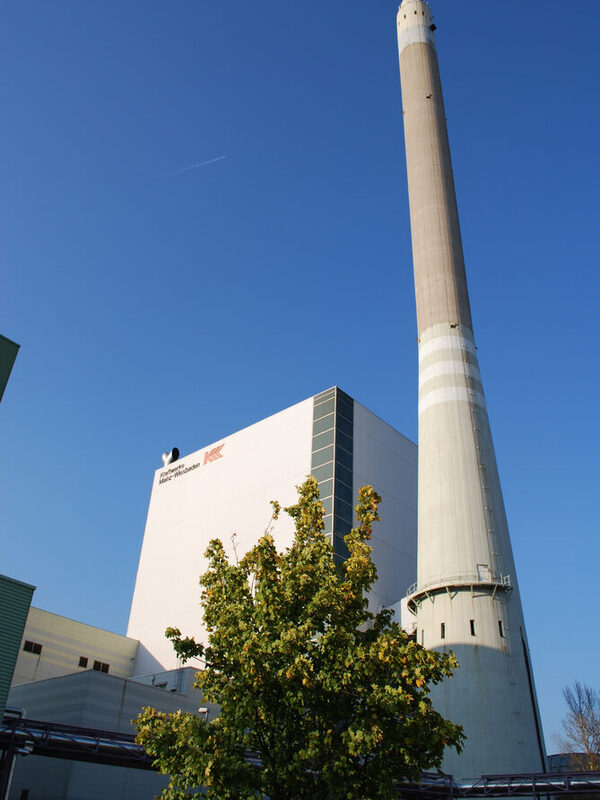Kraftwerke Mainz-Wiesbaden AG (KMW)
As a regional energy supplier, Kraftwerke Mainz-Wiesbaden AG (KMW) supplies the cities of Mainz and Wiesbaden with gas and electricity. It was formed in 1931 from the merger of the municipal gas and electricity plants on Ingelheimer Aue in Mainz and Mainzer Straße in Wiesbaden. The municipal utilities of Mainz and Wiesbaden each hold half of the shares in this public limited company based in Mainz. The company has around 400 employees.
KMW concentrated its electricity production in Mainz on the Ingelheimer Aue and commissioned the three new coal-fired units of "Power Plant 1" there in 1958, 1963 and 1966 with a combined capacity of 300 megawatts (MW). In 1977, "Power Plant 2" was connected to the grid at the same location with the same capacity, a combination power plant based on oil and natural gas combustion, which was actually operated mainly on a gas basis. Power plant 1 with its coal-fired units was shut down in 2000. This resulted in a significant reduction in emissions.
In 1999-2001, the world's most modern gas and steam power plant (CCGT power plant), "Power Plant 3", was built on the Ingelheimer Aue, which currently ensures the electricity supply in Mainz and Wiesbaden in conjunction with the supra-regional Essen-based electricity supplier RWE. Its electricity generation capacity of 400 MW meets the needs of the two major cities and the contractually linked customers in the region.
Since the Europe-wide opening of the electricity grids for general electricity trading, KMW has been planning the construction of a large coal-fired power plant by 2014 with an electricity generation capacity of 830 MW and construction costs of €1.3 billion in order to participate in this highly profitable trade with electricity production that far exceeds the needs of both cities. To this end, imported coal from overseas was to be delivered via the Rhine as a particularly cheap fuel and the GUD power plant was only to be operated as a reserve or shut down. Due to the threat of a significant increase in regional air pollution in the already highly polluted conurbation as a result of the planned large-scale coal combustion and the associated high emissions of greenhouse gases (planned emissions of around 4.63 million tons of CO₂/year, around twice as much as the CCGT power plant), resistance to this project was formed in citizens' initiatives and in both city parliaments. Both cities joined the non-partisan citizens' alliance against the construction of the power plant. During the approval process, around 60,000 citizens from Mainz and Wiesbaden and the city of Wiesbaden raised formal objections. Nevertheless, the responsible Rhineland-Palatinate authorities granted the necessary permits in 2009 and ordered the immediate completion of the construction measures in May 2009. Due to the financial crisis, however, the financing model pursued by KMW failed, which is why it suspended construction on September 28, 2009. In June 2012, the KMW Annual General Meeting decided to terminate the project for good.
At the end of 2012, KMW increased its involvement in the field of renewable energies by acquiring a majority stake in the project developer ALTUS. The first KMW wind turbine went into operation in June 2015.
Literature
Press releases from KMW.
